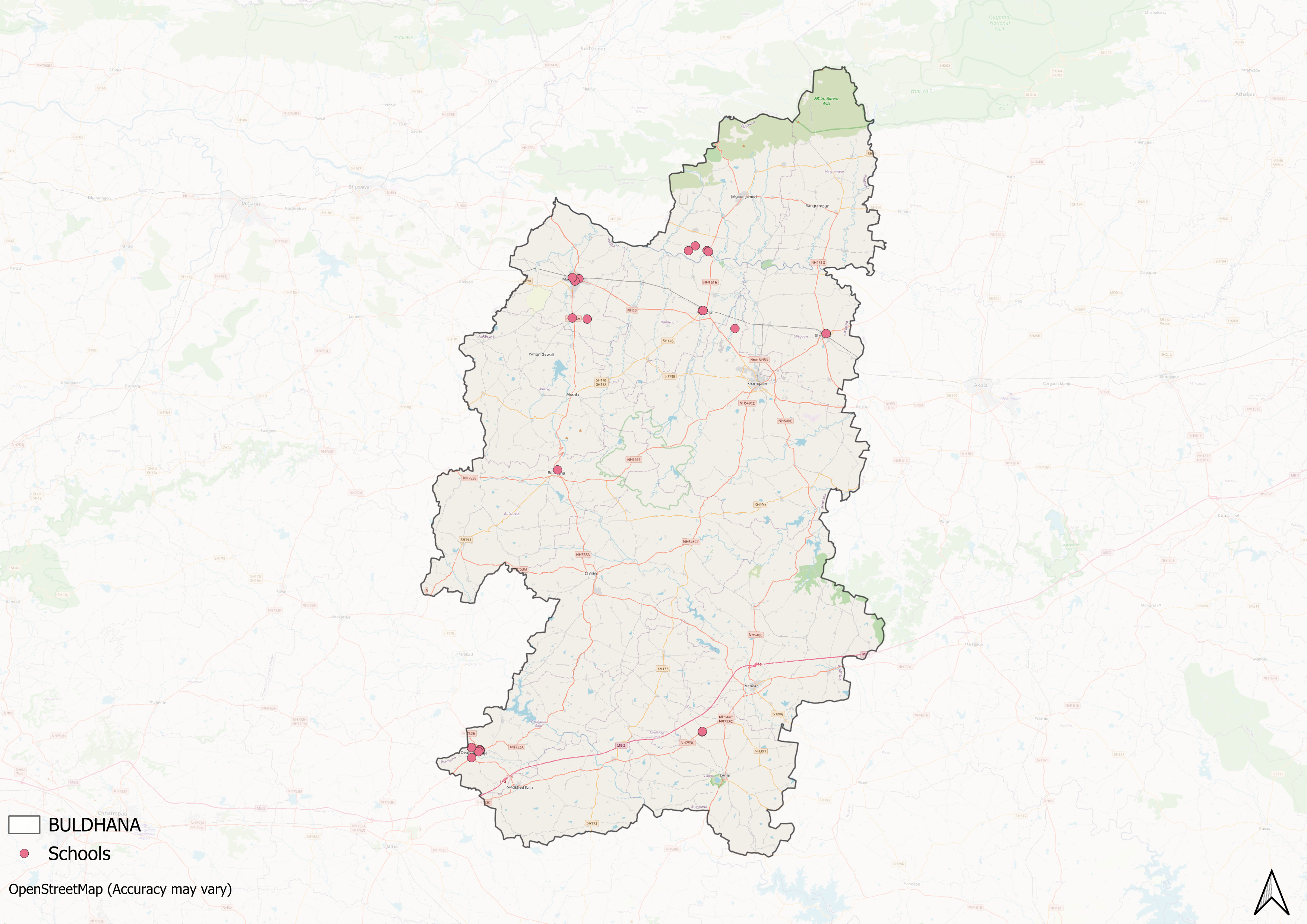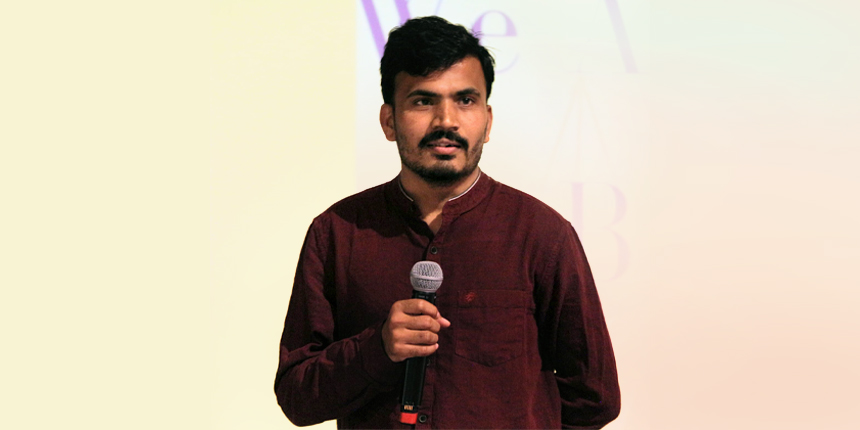Contents
- Early History
- Colonial History
- Local Figures & Organizations
- Y M Kale
- Tarabai Shinde
- Post-Independence Era and Contemporary Educational Infrastructure
- Primary & Secondary Education
- Institutions of Higher Learning
- Jijamata Mahavidyalaya
- Sant Gajanan Maharaj College of Engineering
- NGOs and Community-Based Education Efforts
- Raju Kendre and the Eklavya Foundation
- Graphs
- Enrollment and Dropout Rate
- A. Student Enrollment Numbers
- B. Student Enrollment (Class-Wise)
- C. Student Enrollment (Gender-Wise)
- D. Student Enrollment (By School Management Type)
- E. Drop Out Rate (By Schooling Level)
- F. Drop Out Rate (By Gender)
- Schools
- A. No. of Schools
- B. No. of Schools (Filtered by Gender Mix)
- C. No. of Schools (By School Management Type)
- Teachers
- A. No. of Teachers
- B. No. of Teachers (By School Management Type)
- C. No. of Teachers (Male vs Female)
- D. Education Level of Teachers
- Sources
BULDHANA
Education
Last updated on 28 July 2025. Help us improve the information on this page by clicking on suggest edits or writing to us.
The educational framework of Buldhana aligns with the broader structure of the Indian education system, encompassing pre-primary, primary, secondary, and higher education. However, its history extends well beyond this contemporary structure. Interestingly, it is briefly noted in the colonial district Gazetteer (1910) that indigenous systems of education did exist before colonial rule, with villages having their own little learning centers.
By the 19th century, however, this changed with the introduction of the Western education framework in the district. British administrators and missionaries became actively involved in shaping education in the region, and the Education Department here was established in 1866. Still, even as colonial influences grew, the early 20th century saw a wave of local initiatives; their existence indicated an increasing public awareness regarding the importance of education. Local communities played an active role in advancing education, while several individuals made significant contributions to scholarly discourse, a movement that shaped the district’s educational landscape in lasting ways.
Early History
The documented history of education in Buldhana can be traced back to the 19th century. Before this era, information about educational centers in the district was sparse due to limited historical records. However, this does not imply that formal education was completely absent in the district. As mentioned earlier, the colonial district Gazetteer (1910) mentions that before British rule, “Sanskrit was taught to a few Brahman boys, and Marathi to Hindus of the lower castes. A few munshis also taught Persian to Muhammadan boys. Hindu teaching was given for a fee, but Muhammadan teaching was free.” This indicates that some systems of education did exist in the district in earlier times.
Colonial History
In the 19th century, education in Buldhana developed gradually, shaped by administrative changes, local efforts, and the influence of missionary organisations. The Department of Education was established in 1840 and played a role in establishing many schools for primary and secondary education across the district, and the progress was slow and steady.
At the time when the colonial district Gazetteer was written (i.e. 1910), it is noted that “the District has no High School, but possesses seven English Middle Schools with 1402 scholars, and 30 [regional language schools] Middle Schools with 3018 scholars.” The total number of primary schools recorded was 122, and the number of girls' schools, 13. A mission school, notably, was run for girls at Khamgaon where 101 girls were said to have studied. In total, the district had 12,663 students, including 4,420 in secondary and 8,243 in primary education.
Local Figures & Organizations
As mentioned above, while Western institutions played a notable role in shaping Buldhana’s educational framework, numerous local individuals and organizations also emerged as influential agents of change. These figures not only contributed to formal education but also made lasting interventions in broader intellectual and cultural discourses.
Y M Kale
Y M Kale is an ancient historian from Buldhana who played a pioneering role in documenting the district's heritage. After completing his matriculation in 1898, Kale began his teaching career across the Vidarbha region. His encounter with historian Dattopant Apte during his tenure in Yavatmal sparked a lasting interest in ancient history and archaeological inquiry.
At the age of 22, Kale published Lonar Darshan (1904), a study of the Lonar crater lake, now recognized as a national geo-heritage site. The following year, he authored Gond Rajacha Itihas (1905), detailing the history of the Gond dynasty. Through these works, Kale established himself as a local historian committed to preserving and interpreting the region’s past, and his contributions laid the foundation for future research in Maharashtra’s historical geography.
Tarabai Shinde
Another remarkable intellectual figure from the district is Tarabai Shinde, whose work contributed significantly to early feminist discourse in India. Though distinct in context and form, her work aligns in spirit with early feminist writings that were beginning to take shape globally around the same period. She challenged patriarchal norms and authored a work considered to be India’s first modern feminist text, Stri Purush Tulna (A Comparison Between Women and Men), which was published in 1882.

Tarabai received no formal schooling but was educated at home under the guidance of her father, Bapuji Hari Shinde, who was associated with the social reformer Jyotirao Phule. Through this early exposure, she became familiar with reformist ideas and later joined the Satyashodhak Samaj, an organization that sought to challenge caste and gender hierarchies.
She was proficient in Marathi and Sanskrit, and her writings reflect her engagement with contemporary social issues, particularly those affecting women. Tarabai also worked alongside Savitribai and Jyotirao Phule in various reform initiatives, contributing to the wider movement for education and social change in the region.
Post-Independence Era and Contemporary Educational Infrastructure
Following India's independence, the education system in the district underwent major transformations, driven by both state policies and local leadership. The introduction of structured education levels, pre-primary, primary, secondary, and higher education, along with the implementation of National Education Policies, heavily shaped Buldhana's educational landscape. Over the years, the sector expanded with contributions from both government-funded institutions and private organizations. Additionally, the introduction of various educational boards, each offering distinct curricula and standards, provided students with more choices and opportunities.
Primary & Secondary Education
During the colonial period, both public and private efforts in education primarily focused on primary and secondary schooling, as indicated by data from district gazetteers across Maharashtra. Higher education remained underdeveloped in most districts, including Buldhana, with gradual improvements over time. While basic infrastructure for primary and secondary education existed, its expansion was closely tied to increasing enrollment and greater involvement of local figures.

Today, this expansion is evident in the widespread presence of schools across various wards of Buldhana, with available data reflecting the steady growth of educational institutions in both urban and rural parts of the district.
Institutions of Higher Learning
Perhaps one of the most notable changes in Buldhana’s educational landscape is tied to the establishment of higher education institutions. While primary and secondary schooling expanded steadily, opportunities for advanced education remained limited for much of the district’s history. Over time, local leaders and organisations played a crucial role in addressing this gap, leading to the creation of several colleges. As a result, many institutions in the district today are privately managed, semi-private, or autonomous.
Jijamata Mahavidyalaya
Jijamata Mahavidyalaya is one of the oldest institutions for higher education in Buldhana district. It was established in 1956 by the Shri Shivaji Education Society, which is based in Amravati. The college initially began as an Arts college and gradually expanded to include faculties of Science and Commerce. The institute offers a comprehensive range of courses, spanning from junior college programs to postgraduate and postdoctoral research.
Sant Gajanan Maharaj College of Engineering
Established in 1983 by Shri Gajanan Shikshan Sanstha, this college is one of the oldest engineering institutions in the district. It offers five undergraduate engineering courses and five postgraduate courses, including four in engineering and one in management.

In addition to these institutions, a number of centers for higher education operate throughout the district, which offer programs across various disciplines. While the landscape of higher education has broadened significantly since independence, disparities in access, particularly along geographic lines, remain evident.
NGOs and Community-Based Education Efforts
Education has been a key driver of social reform, particularly in addressing inequality and expanding access to learning. While formal institutions provide structured education, many communities continue to face barriers due to poverty, social stigma, or lack of resources. To address these challenges, various organizations in Buldhana have focused on community-based education initiatives, with each working to tackle specific social challenges present in the district.
Raju Kendre and the Eklavya Foundation
Raju Kendre, an educator, social entrepreneur, and activist from Pimpri Khandare in Buldhana, has been a prominent figure in this space. He is known for his work in promoting education and grassroots development and particularly worked with rural and indigenous communities of India.

Kendre is the co-founder of the Eklavya Foundation, an organization dedicated to empowering first-generation university students from underprivileged backgrounds. The foundation focuses on individuals from Scheduled Castes Scheduled Tribe, Nomadic and De-notified Tribes, and the Other Backwards Communities.
The Eklavya Foundation offers various programs aimed at providing academic support, mentorship, and life skills training to help students navigate the challenges of higher education. The organization also creates platforms for students to access fellowships and opportunities at prestigious higher-learning institutions.
Graphs
Enrollment and Dropout Rate
Schools
Teachers
Sources
Central Provinces District Gazetteer. 1910 (Reprinted 1979). Buldhana district, Vol A. Executive Editor and Secretary, Gazetteer Department, Government of Maharashtra, Mumbai.
Eklavya India. About Eklavya.https://eklavyaindia.org/about-eklavya/#rkhttps://eklavyaindia.org/about-eklavya/#rk
Geetika Sachdev. 2020. "Tarabai Shinde: The Author Behind the First Modern Feminist Text in India."Yahoo News.https://ca.news.yahoo.com/tarabai-shinde-the-author-behind-the-first-modern-feminist-text-in-india-030036767.html.https://ca.news.yahoo.com/tarabai-shinde-the…
Jijamata Mahavidyalaya, Buldhana. Official Website.https://www.jmvbuldhana.ac.in/https://www.jmvbuldhana.ac.in/
Maharashtra State Gazetteers. 1976. Maharashtra State Gazetteers: Buldhana. Directorate of Government Print. Stationery and Publications. Maharashtra State.
Pallavi Smart. 2022. "Raju Kendre, Eklavya, and the Forbes List." The Indian Express.https://indianexpress.com/article/cities/mumbai/raju-kendre-eklavya-forbes-list-7765326/https://indianexpress.com/article/cities/mum…
Rajendra Dawe. 2020. "Y. M. Kale: The First Historian of Vidarbha." The Hitavada.https://www.thehitavada.com/Encyc/2020/3/15/Y-M-Kale-The-first-historian-of-Vidarbha.htmlhttps://www.thehitavada.com/Encyc/2020/3/15/…
Shri Sant Gajanan Maharaj College of Engineering. Institute at a Glance.https://www.ssgmce.ac.in/Institute_At_A_Glance.phphttps://www.ssgmce.ac.in/Institute_At_A_Glan…
Last updated on 28 July 2025. Help us improve the information on this page by clicking on suggest edits or writing to us.